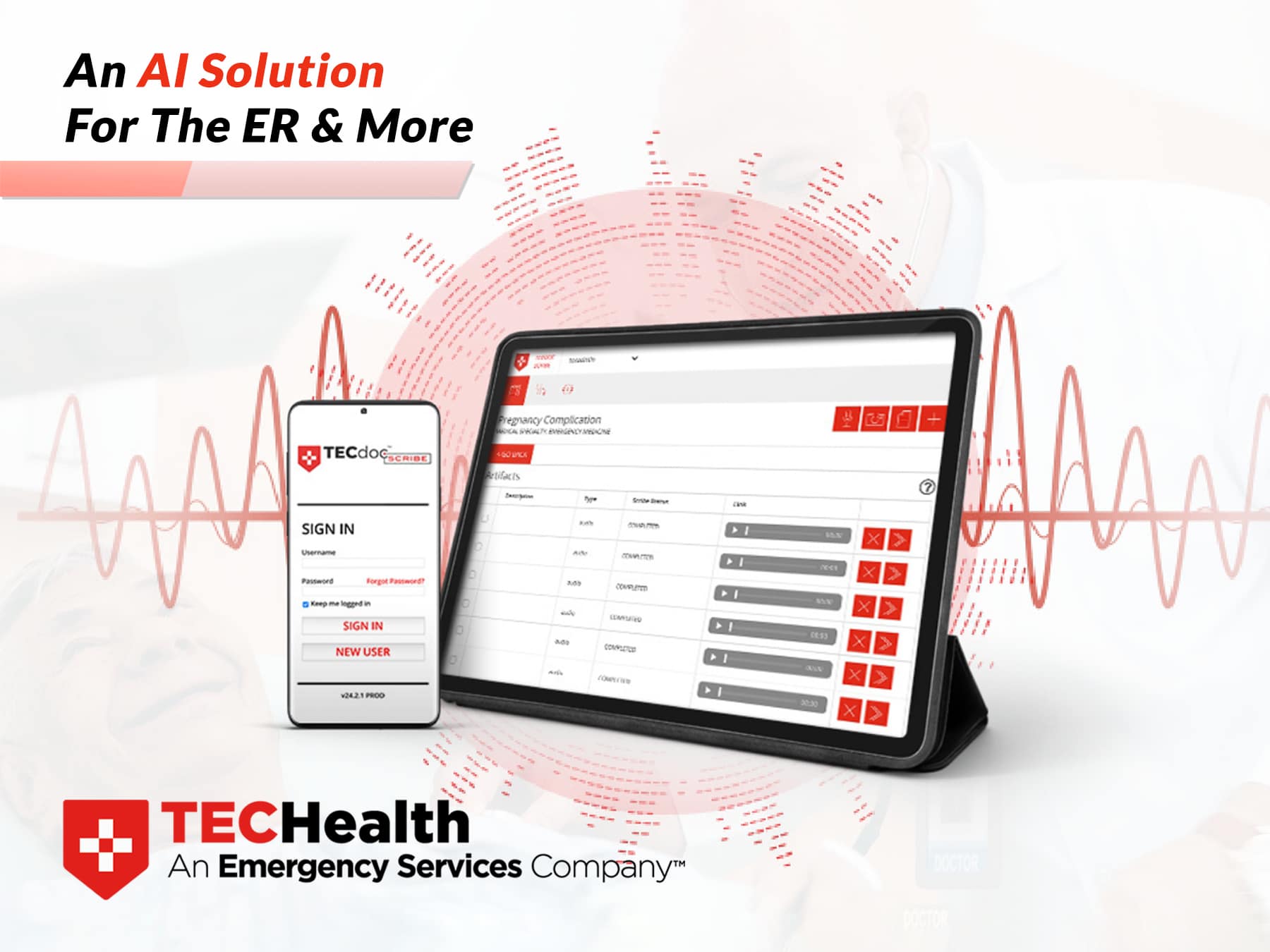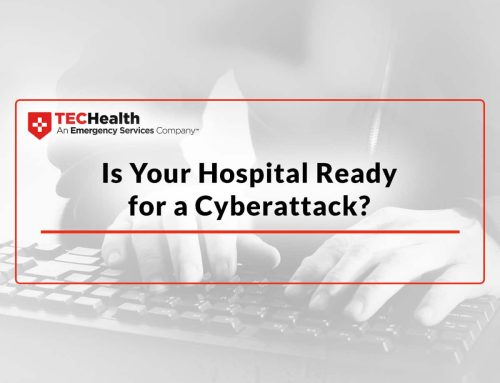The Growing Role of AI in Healthcare: From Clinics to Emergency Rooms
Although artificial intelligence has been in development for decades, it’s only taken center stage over the past several years. In healthcare, implementing AI solutions physicians can use at the point-of-care is an even more recent phenomenon.
Large health systems are rolling out AI tools in their clinics like ambient listening for note taking and AI-drafted messages in response to patient email requests. However, ER teams are often overlooked or asked to make-do with AI tech more appropriate for a primary care setting than a busy ER.
TECdoc Scribe is looking to change that for both ER physicians and physicians practicing in other care settings.

Challenges ER Physicians Face: Documentation and Cognitive Overload
“I hate documenting. I hate being tied to the computer,” says Eric Wilke, MD, an ER physician with more than 25 years of experience and Chief Operations Officer of TECHealth. “Some of the data shows that physicians spend half to three-quarters of their time documenting, so that’s less time you have in front of the patient.”
Like all physicians, Dr. Wilke got into medicine to provide hands-on care to those in need—not work in front of a screen. He also points out that there is so much more to remember in modern medicine as the body of knowledge around diagnosis and treatment has grown at an exponential rate.
Solving both these challenges for ER physicians was the driving force behind the creation of TECHealth’s AI-powered TECdoc Scribe app. While documentation and knowledge burdens have been major issues at least since the advent of electronic medical records, a technology that could actually make things easier hasn’t been possible until recently.
“It wasn’t until the ChatGPT era when a lot of these large language models became affordable for smaller companies to use, when it became feasible to build in some of the tools of AI to help us to both create documentation and remind you of things you want to include,” explains Dr. Wilke.
How TECdoc Scribe Uses Ambient Listening to Streamline ER Workflows
Having a single AI-powered tool to meet the unique needs of emergency medicine physicians accessible through a smartphone app is a gamechanger. Designed by ER physicians, TECdoc Scribe has features to help with day-to-day clinical work, saving time, reducing cognitive burden and enhancing care.
- Ambient listening: By activating TECdoc Scribe’s listening tool during a patient encounter, physicians are able to be fully engaged with their patient. They can talk with and exam a patient without having to worry about documentation. TECdoc Scribe takes only clinically relevant information from the conversation/examiniation and starts building the patient chart and notes.
“Even if you’re using a dictation software, after you’re done talking to a patient, you have to then verbally reproduce the conversation,” explains Dr. Wilke. “It’s still a separate step than what TECdoc Scribe does, which is that it records while you’re talking to the patient and puts the relevant information in the chart and that’s it.”
TECdoc Scribe also allows information about the patient to be added to the chart later (e.g., when imaging results come back) just by talking to it in the same natural manner a physician would with a nurse or colleague. - Base of knowledge: With the wide range of conditions ER physicians treat and care processes they are responsible for following, TECdoc Scribe can help doublecheck that all the bases have been covered by offering reminders.
“We designed it to be a kind of belts and suspenders to remind you of things you want to be thinking of as you’re running from patient to patient,” says Dr. Wilke. “It not only creates the documentation but also reminds you of things you may want to include—some additional things you might want to consider.” - Smart photography: TECdoc Scribe can make recommendations based on verbal interactions but also images. For instance, an ER physician can take a picture of a rash and use TECdoc Scribe to confirm a clinical suspicion or suggest other possibilities. “As a physician, it allows you to fact-check yourself,” says Dr. Wilke.
To ease documentation, it can also populate the results of lab tests in a patient’s chart based on a photo. “You can just take a picture of the CBC or chemistry panel on a screen, and it builds that into the chart.”
It allows physicians to do a simple copy and paste into a hospital’s host medical record.
Expanding Beyond Emergency Rooms: TECdoc Scribe’s Versatility Across Healthcare
TECdoc Scribe is also scalable to other care environments⎯including hospitals and urgent care centers⎯as well as primary and specialty care clinics of all stripes. Moreover, it’s priced more competitively than other AI solutions and easier to implement.
Dr. Wilke says other significant additions to TECdoc Scribe are in the works to help improve the overall care experience for physicians and patients. But already the verdict from physicians using the tool has been clear.
“I got an email from a doctor today that said, ‘I’ve been waiting for this my whole life.’”
To learn more about TECdoc Scribe and how it can significantly lower the documentation burden and improve physician performance, visit tecdoc.ai online.




